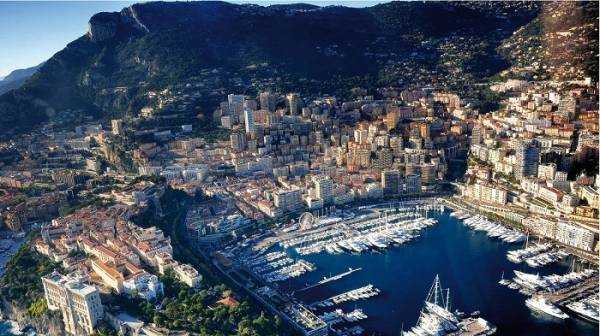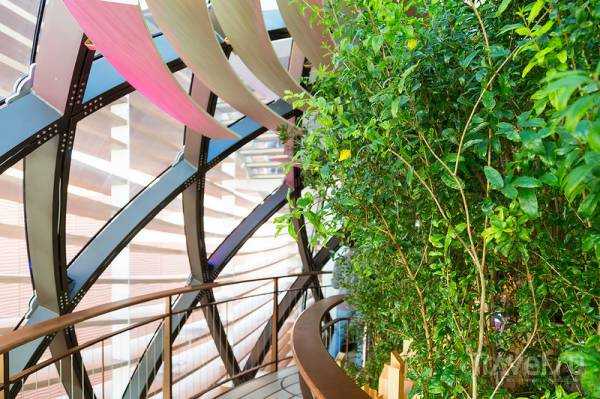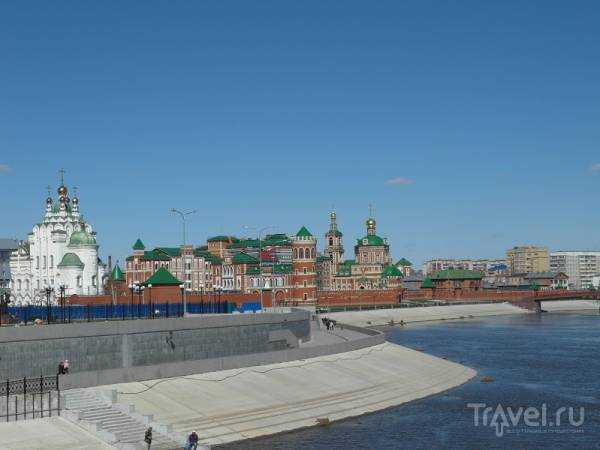
Over the last 5 years, Yoshkar-Ola, thanks to the Western European-style neighborhoods built here, has transformed from an uninteresting backwater into a fairly popular and well-known place among travelers, and is gradually becoming a staple in blogs.
At first, life-size models of the Spasskaya Tower, the Bruges embankments and Dutch courtyards, together with the square Kremlin, the Grace Kelly monument and Christ riding a donkey, caused serious discussions about both the sources of funding for all this construction and the aesthetic value of the result. Regardless of specific opinions, the effect was achieved - people learned about Yoshkar-Ola, people with cameras and money flocked to it.
In addition to this Disneyland, the city has many interesting Stalin-era buildings, as well as a complete lack of development that is out of proportion to the scale of the construction, wild even by the standards of the 90s.
Our walk started in the best possible way – along the far part of Pobedy Boulevard. I will show you the boulevard itself in other parts. The main thing here is that it starts with the usual Yoshkar-Ola quarters with barracks and Stalin-era buildings. Only as we walk, right at the end of the opposite end of the boulevard, do we begin to discern the silhouette of the Spasskaya Tower. Most of the walkers (even though I warned them) were stupefied and had cognitive dissonance:

The place behind the Spasskaya (officially – Blagoveshchenskaya) tower, where we started our walk around the new center, has its own name – the Republic and the Blessed Virgin Mary Square. It was decided to call the Mother of God in the Catholic manner, apparently, within the framework of the general pro-European style of this part of the city.

The Dutch-style houses on this square are inexplicably called “Arkhangelskaya Sloboda microdistrict.” It sounds somehow primordially Russian, but the explanation is simple: the name is in honor of the Archangel Gabriel, who stands in the middle of the fountain in the previous photo.
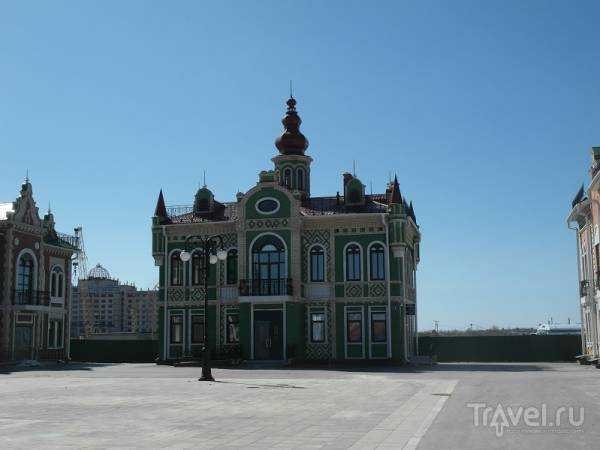
All these crazy new buildings are made of painted brick. In some places it is frankly an eyesore – the brick is new, even and smooth, unlike the original European buildings, where each brick has a unique shape due to unevenness and cracks.
In some places the paint had already peeled off the bricks by the time we walked, so it’s better to admire all this splendor from a little distance.

Our trip took place in May 2013. Probably a lot has changed in a year and a half, but back then the space between the Dutch houses was quite empty and lifeless.

In addition to the buildings, the monuments here are also surprising. In a small park near the embankment, there is a sculpture of Lorenzo di Piero de Medici "the Magnificent". He was a Florentine statesman, the head of the Florentine Republic during the Renaissance. The park and sculpture are supposed to symbolize the revival of the Mari El Republic, including art and patronage.
If a bust of the railway commissioner Stepan Terentievich Kovylkin were placed next to Medici the Magnificent, the wow effect could be even more powerful...

The Cathedral of the Annunciation of the Blessed Virgin Mary has been under construction on the square since 2007. It is supposed to resemble St. Basil's Cathedral in Moscow and the Church of the Savior on Spilled Blood in St. Petersburg. Next to it is a monument to the Virgin Mary, which is not in the frame. Together with the Archangel Gabriel from photo #2, they are supposed to symbolize the episode of the Annunciation, when the Archangel Gabriel informed the Virgin Mary of the future birth of Jesus from her.
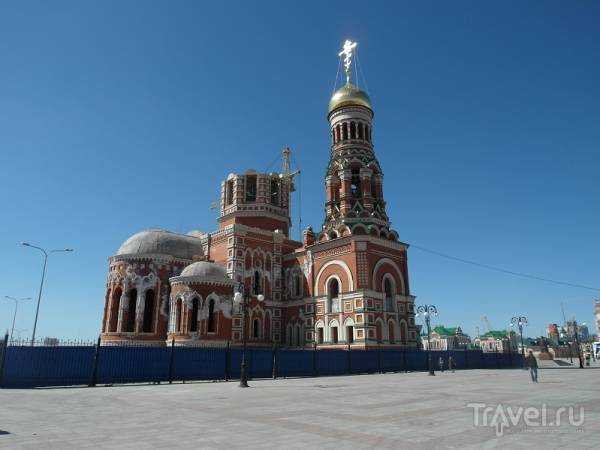
From Arkhangelskaya Sloboda we go to the bank of the main river of Yoshkar-Ola – Malaya Kokshaga. And immediately we see a long single facade of houses in European style along the bank. This is the Bruges embankment (quite an official name), the most famous part of Yoshkar-Ola Europe.
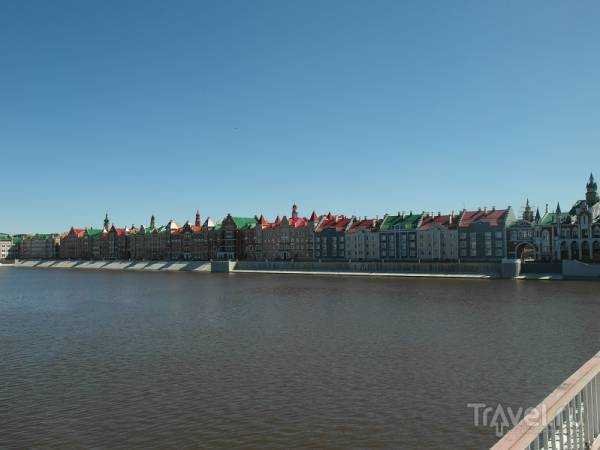
The reasons for turning Yoshkar-Ola into such an attraction are not officially stated anywhere. All of this is work on improvement and improvement of the urban environment. There is an unofficial version that the head of the republic Leonid Markelov is an avid traveler, and in the capital of the controlled republic he decided to implement all the best that he saw on his trips.
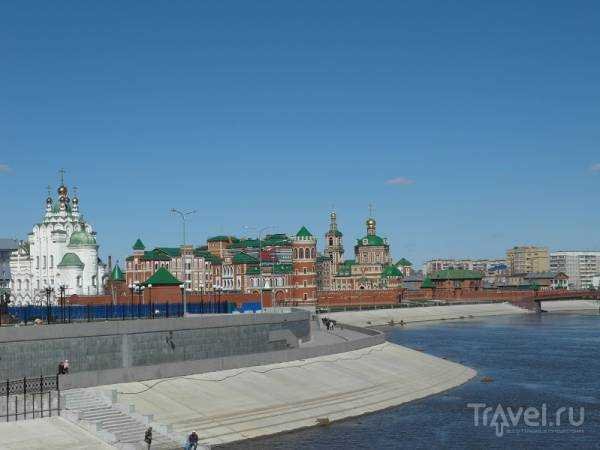
It is difficult to say how true this is. The Yoshkar-Ola new building, like the head of the republic, has become overgrown with a certain layer of legends and speculations, in which it is difficult to sift out truth from fiction.

The city is quite lively, despite its slightly more than 250 thousand population. The streets are crowded, cars and transport scurry about, trade is going on. But all this is more about the "old" part of the city (in this post I will call everything that is outside the new buildings). Here, in an oasis of eclecticism and brick replicas, there are comparatively few people.

Those who walk around the "new" part are mostly tourists or employees of the organizations located here. The locals with whom I had to talk really don't like their new center. It's not hard to understand them - the main part of the city, where people live and work, is in such a neglected and unsightly state that, imagining how a lot of money was invested here, you involuntarily start to hate all these Brussels mansions and the embankments of Bruges.

Some houses are covered with marble. While it is brand new and shines like a penny, it only spoils the look – it gives off the air of a cheap shopping mall somewhere on the outskirts. On the other hand, when all these walls, both brick and marble, get a little older, absorb dust, and become worn, they will look very cool. If they don’t peel off, of course.

Yoshkar-Ola continues to hit with surprises. Opposite the registry office on the Bruges embankment, there is a monument to Prince Rainier III of Monaco and his wife, actress Grace Kelly. It is supposed to symbolize marital love and fidelity. I learned about the existence of such people from this monument – monarchs of a dwarf state somehow did not interest me much before. They have probably never been to Russia, much less to Yoshkar-Ola. Compared to them, Medici the Magnificent probably smokes modestly on the sidelines.
In light of worsened relations with the West, this monument already looks ambiguous, to put it mildly. If they really wanted to illustrate love and fidelity on some famous people, they could have, for example, put up Valeria and Iosif Prigozhin.
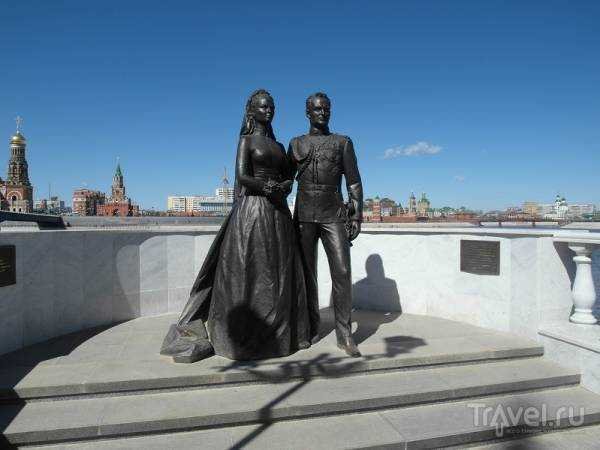
The workers of the local brick factory were not left without work. Not only the new city center, but also many ordinary buildings on the outskirts are built entirely from bricks of two or three characteristic shades. Something similar was already seen in Mordovian Kovylkino, but in Yoshkar-Ola the scale of the brick dominance is simply astounding.
A house on the Bruges embankment with 13 figures of Christian character on the facade. These are not the apostles and Jesus, as one would like to think, but some local religious figures, apparently – the first Kazan Archbishop Guriy, the compiler of the Mari grammar Veniamin, etc.
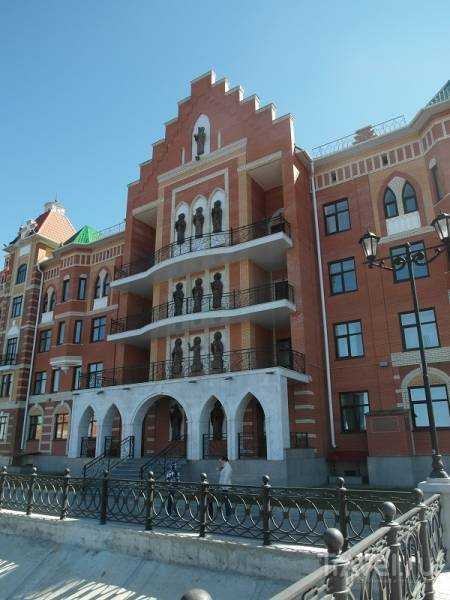
From the other side, the houses on the embankment look like this. Here is an ordinary working Yoshkar-Ola street with nine-story buildings. Judging by the installed lanterns, they are also going to improve this part. I hope that the ardor of the city planners will not stop there and they will see the matter through to the end:

The boarding school for gifted children, located in one of the buildings on the embankment, is surrounded by a fence with a turret, as if stolen from the Yoshkar-Ola Kremlin (see below) and reduced in size. Here the mixture of styles goes beyond all conceivable limits - a Flemish house is guarded by a dwarf Russian tower:

Perhaps the most serious flaw in this project is the lack of greenery. Trees and shrubs could perfectly fill the empty gray spaces, decorate the already nice views, create shade for those walking, humidify the air and create harmony in a picture where concrete and brick dominate.

Almost all the houses on the Bruges embankment are occupied by various government organizations. In addition to the registry office and the boarding school, there are five more ministries of the republic. It is good that these houses will not remain empty decoration. But given the tourist focus, it would be nice to add a couple of cafes and restaurants, a hotel and, for example, a tourist information center. I think the tourist flow to Yoshkar-Ola will only increase now, and problems with choosing hotels arose for us already in 2013.

Maybe I started too abruptly, but my attitude to the new Yoshkar-Ola is still rather positive. At least, it is hard for me to imagine in which other Russian city you can get such a powerful break in the pattern and, as a result, a set of impressions. The fact that Yoshkar-Ola used to be a more than dull and uninteresting place is not a secret for many. Today the city has a 100% face and a gimmick. A little unexpected, but curious and memorable.
An interesting monument to Elizabeth Petrovna, young and on horseback, in motion, is installed on the front side of the boarding school. Originality has been beneficial here:

The Republican Puppet Theatre, which this style of a magic castle suits well. Today it is completed, open and performances are given there.

Source: travel.ru



